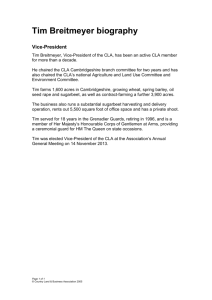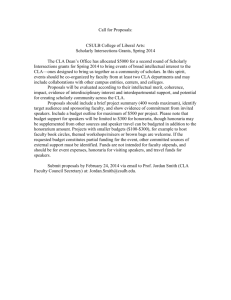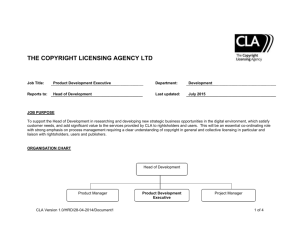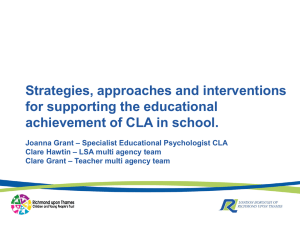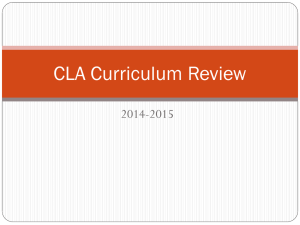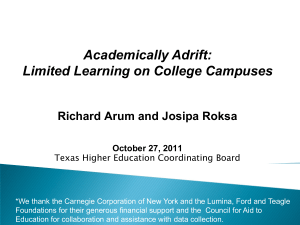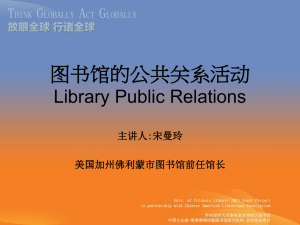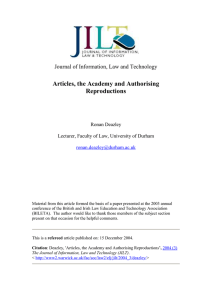Madeleine Pow, CLA: Key functions and operation of RROs
advertisement
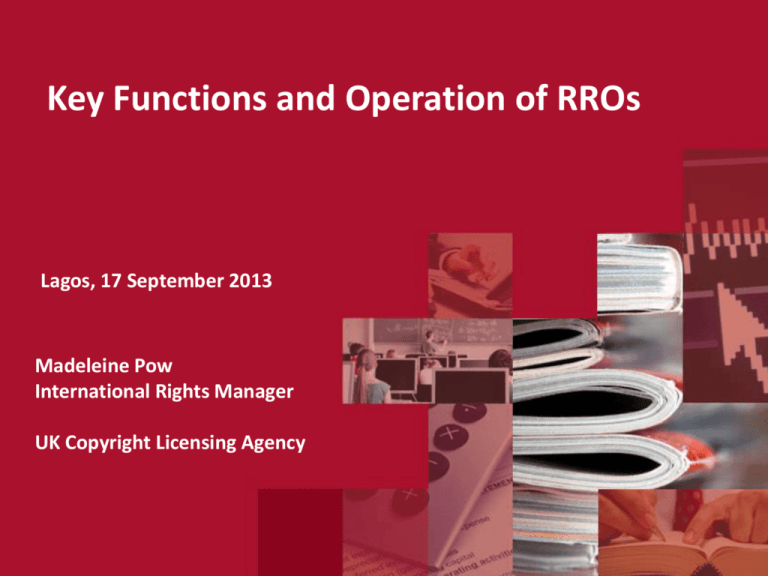
Key Functions and Operation of RROs Lagos, 17 September 2013 Madeleine Pow International Rights Manager UK Copyright Licensing Agency AGENDA 1. 2. 3. 4. Business Flow Chart Licences Revenue Collection and Distribution International RRO flow chart, permission, limits and indemnity Distribution of funds Copyright Owners MEMBERSHIP OR AFFILIATION Material provided for repertoire Licence fee payment RRO LICENSING & MONITORING Access to repertoire Users (Clients) AGENDA 1. 2. 3. 4. Business flow chart Licences Revenue Collection and Distribution International CLA provides a range of licences tailored to each sector. Current CLA Licences • Business • Higher Education • Public Administration • Further Education • Law • Schools • Pharmaceutical • Press Cuttings • Multinational • Document Delivery All licences include the following rights and repertoire: What can be copied? Printed books, magazines, journals, periodicals, law reports, press cuttings and reference editions can be photocopied or scanned digitally Excluding the following categories: • printed music (including the words) • maps, charts • newspapers • workbooks, workcards or assignment sheets • any work that includes a notice in which the copyright owner has stipulated that it may not be copied under a CLA Licence Plus any publications listed on the relevant Excluded Works lists on the CLA website How much can be copied? Up to 5% of the work, a single chapter of a book, a single law report, or single article from a periodical, whichever is greater What can be done with copies? • Distribution as photocopies or printouts within a UK organisation* • Distribution of scanned copies via email within a UK organisation* • Storage by individuals for personal use No licence permits making copies which directly or indirectly substitute for the purchase of an original published edition (whether print or digital) or which might be used instead of commissioning work directly from an artist or writer. The licensee must make reasonable endeavours to identify whether it subscribes to a digital version of the work in question and, if so, to use that digital version instead of creating a digital copy by scanning. *Some licences allow limited overseas distribution of copies AGENDA 1. 2. 3. 4. Business flow chart Licences Revenue Collection and Distribution International Source of Licence Fees: Financial Year 2012/13 £73.3million International 21% Schools 19% Document Delivery 2% Government 8% Higher Education 18% Business 23% Further Education 9% How Revenue is Distributed CLA distribute directly to overseas RROs Member Societies PLS Licence Revenue UK Licensees CLA ALCS DACS CLA takes subvention to cover selling, data collection and distribution costs Revenue distributed based on survey data collected Rightsholders Publishers Authors Artists Societies take subvention to cover distribution costs AGENDA 1. 2. 3. 4. Business flow chart Licences Revenue Collection and Distribution International IFRRO bilaterals flow chart, permission, limits and indemnity Distribution of funds Licence fee payment RRO RRO Material provided for repertoire LICENSING & MONITORING Access to repertoire Users (Clients) Any questions about CLA? Madeleine Pow International Rights Manager Appendix The following two slides were not shown as part of the presentation, but are included in the printed pack to show the ownership structure of CLA • CLA is a collective management organisation (CMO) for text and image based works. • We are owned by publishers (PLS) and authors (ALCS) and represent visual creators (DACS) via an agency agreement. • Established for 30 years, we license copying from books, magazines, journals and digital publications. • We offer licences for business, education and public sector providing the right to copy content without the risk of infringing copyright. • We protect creativity by enabling creators & publishers to get a fair reward when their work is copied. • CLA has generated over £750m for rights holders since 1983. CLA stakeholders
